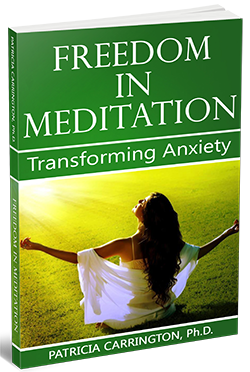Meditating Under Special Circumstances
Patricia Carrington, Ph.D.
Author of “Freedom in Meditation”
We do not yet know how people use meditation when under extreme duress involving a threat to their lives – as, for instance, when stranded in a lifeboat at sea, imprisoned in enemy territory, or facing other catastrophic situations. Systematic reports of such uses of meditation have not as yet been collected. It seems very much to the point, however, to consider some of the reports of persons who have used other relaxation techniques which, in effect, evoke a meditative mood, in order to comfort themselves and increase their strength and endurance under extreme conditions.
Several reports from autogenic trainees who used this technique to handle various catastrophes are reported in scientific journals and books. All these people were caught in situations where self-protection and survival assumed paramount importance. For all of them, the use of the relaxation technique had an important effect on both their minds and bodies and helped to support them so that they did not go to pieces. Instead, their egos were often strengthened under adverse conditions.
These reports range from isolated instances of persons who found their relaxation training helpful when they were being menaced by the Gestapo, to groups of soldiers in a POW camp where no medical assistance was available, to soldiers facing dangerous battle situations, and political prisoners in solitary confinement or during interrogation.
A particularly impressive example of the strategic use of a relaxation technique is the story of a middle-aged German- Jewish woman who happened to have learned autogenic training when she was a young girl in Berlin during World War II.1 While hiding from the Gestapo, this woman at one point lived illegally for two and a half years, hiding wherever she could in order not to allow the authorities to know that she still existed. She was continually in immense danger, and suffered much anxiety and degradation.
During the air raids, when she had to stay alone upstairs in an apartment, often in complete darkness, she experienced her most difficult ordeals. It was then that her relaxation training proved to be crucial. ‘How else would I have been able to stand this recurring terror?’ she writes. ‘I was not only afraid of being hit by a bomb, but even more so of the possibility I would get hurt and thus endanger the people who gave me shelter to save me from the Gestapo. As soon as the air sirens started, terrible feelings of anxiety developed. However, with the (relaxation) exercises, I could reduce these feelings to a relatively tolerable level, and somehow keep them away from me. I managed to remain calm and almost without fear until the attack was right close by.’ At this point her relaxation training did not help anymore, but as the attack moved further on, ‘I quickly regained my inner calm with the exercises . . .’ This woman was convinced that it was in part due to her relaxation training that she managed to get through those years of terror and that she finally emerged with relatively little psychological damage. An exhaustive depletion of vitality did not occur, she said, because she was able to compensate for the repeated severe buildup of tension by inducing the comforting relaxation.
It is particularly interesting to note the limitations of relaxation training in this woman’s account. The point at which its effectiveness seemed to break down was in the face of imminent threat to life – at the height of the bombings. In these moments the self-protective impulse to flee (which of course could not be acted upon under these circumstances) took over and the survival instinct became overwhelming.
What is also interesting is the fact that resuming the relaxation exercises again as the bombing receded helped this woman to handle her excess anxiety in such a way that re-stabilization could occur. As she indicated, the use of the relaxation exercises somehow prevented deeply disorganizing effects of these repeated traumas on her personality. This is an impressive account and there is certainly no reason to suppose that people well trained in meditation, which is similar in many respects to autogenic training, could not achieve much the same results if they entered a meditative state under similar circumstances.
1. J. H. Schultz and W. Luthe, Autogenic Therapy, 6 vols (New York: Grune, 1969), vol. III, p, 183.
Dr. Patricia Carrington’s award winning meditation technique CSM (Clinically Standardized Meditation) is a clinically sensitive meditation method developed by the Medical Department of New York Telephone Company and used by numerous medical institutions, organizations, and individuals worldwide. For information click here.
Discover Meditation Today!







